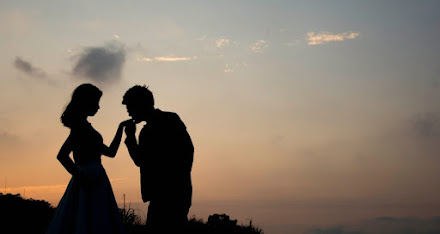Genre Research: Romance
Some common MIS-EN-SCENE we noticed were the setting, costumes, lighting, and props.
Setting: The setting can be used to create a romantic atmosphere such as a candlelight dinner, a science beach view, or a city skyline. The setting can also be used to reflect the emotions and personalities of the characters.
Costume: Costumes can be used to convey the character's personality, social, status, and style. In a romance movie, costumes can be used to create a sense of intimacy and connection between the characters. Movies such as these may use a tuxedo and a nice dress for a night out or a casual look for an evening dinner.
Lighting: Lightning can be used to tell the mood of the story such as a candlelight soft lighting or the warm glow of a sunset or sunrise. Lighting can be used to tell the actors' emotions. A bright light may indicate happiness or a dark light may indicate sadness or introspection. Romance movies typically use a brighter light when the characters seem to be in love. While a darker light is used when the couple is fighting or breaking up.
Props: Props can be used to indicate an actor's feelings towards another. A secret delivery of flowers and chocolates might mean the recipient has a secret admirer. Handwritten love letters or jewelry can also symbolize the depth of the character's feelings and to show the profession of their relationship. Props like gifts are used to represent a bond between characters. Many romance movies use anniversaries or weddings to allow the actors to gift give.
Shots that seem apparent in romantic movies are two shots, medium-long shots, medium shot, medium close-up, close-up, extreme close-up, and over-the-shoulder shots.
Two shots capture the subject's interaction. Their body language towards each other, if they're scared, anxious, or happy to be around the other, gives us insight into their relationship. Shows the emotional reactions between subjects.
Over-the-shoulder shots are very common. To show the handwritten letter he wrote to her, or to see the flower petals laid out on the floor. Gives us a direct view of the action. Allows us to be a part of such an intimate part of the subject's relationship. Since typical romance movies have a grand gesture of some sort, we can see the gesture through their eyes.
Extreme close-up. This shot is used when the girl nods her head ''yes'' when he asks if she will marry him. Zoomed in on her eyes now watering with emotion. Filling the screen with how happy she is, portraying their affection.
Sound!
Non-diegetic sound: To establish the mood. The light happy music may indicate an upcoming grand gesture, or the eerie dark music symbolizes an upcoming breakup. This sound allows the viewers to prepare for what's coming next and establish the future mood.
Diegetic sound: the sound of the environment such as the noise of a bustling city or the sound of waves crashing on the beach can help establish the setting and create a sense of place. A candlelight dinner may have the fire crackling in the back, or a night out could have the sound of cars or people going by.
Sound effects: Sound effects such as the sound of a rain shower or the rustling of leaves can be used to enhance the sensory experience of a romantic scene and make it more immersive for the audience.
Voiceover: Voiceovers can be used to provide insight into a character's thoughts and feelings or to convey the narrative of the story.
Editing!
Cross-cutting: In a romance movie, this can be used to show two characters' reactions to the same event, or to create tension between two characters.
Flashbacks: Flashbacks can be used to show progress over time in someone's relationship. Provides context.
Split screen: Used to show something happening at the same time, a phone call, or an interaction between others. Separate actions in the same frame.
Montage: Montages can be used to show the relationship over time, and the development in it. Creates a sense of nostalgia or longing.
Likes/Dislikes!
When considering the aspects of the romance genre there are lots of benefits that we could use in our film to emphasize a relationship between 2 characters that could better drive the plot and give reasonable warrant for our protagonist's actions. Also, the typical setting of a romance genre, like a house, would correlate with locations we would have access to.



Comments
Post a Comment